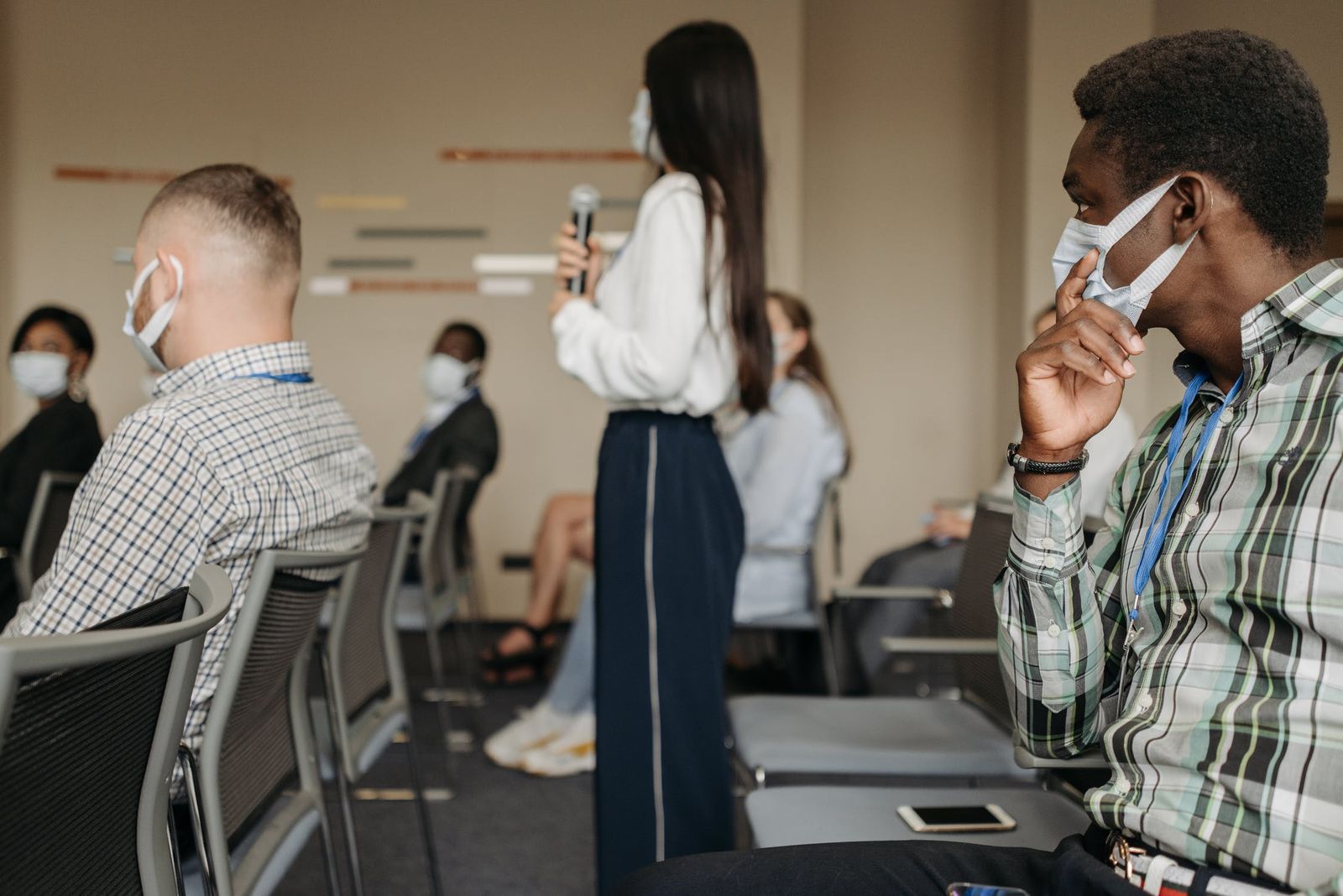
Having recently planned and facilitated a number of in-person meetings and events for a variety of clients and industries, following are 11 stand-out observations for keeping your members and attendees both safe and comfortable:
- Waivers are commonplace. Every client event we’ve held has required a waiver of some sort. Currently, since so many people are used to scanning QR codes at restaurants to view menus, my favorite approach is a web form. Set up the form online, have QR codes posted at/around registration, individuals scan the code/complete the form, and finally they show you their verification screen. Only then do they receive their name badge.
- Wristbands are great in theory, but problematic in practice. Many events are adopting an optional color-coded stoplight system of stickers, name badge ribbons, or wristbands where green represents attendees who are fully vaccinated and for whom hugs are welcome; yellow represents cautious attendees who prefer to only bump elbows; and red represents attendees who prefer no contact whatsoever. The problem is: Enforcement comes down to the individual wearer, and we’re generally not empowering them with the tools to do so effectively. Not to mention, it doesn’t account for someone who may be color-blind. (Alternatively, one association adopted a branded vs. a generic sticker for recipients who verified their vaccination status — and that seemed to go over really well! The branded sticker, designed in-house, ensured attendees couldn’t bring their own to game the system.)
- Attendees expect mask requirements. While this may not be entirely universal as opinions on masks vary greatly, the feedback I’m seeing from attendees is that they expect staff, leadership, and attendees to role model consistent mask wearing throughout the event. The perception seems to be that the more masks, the safer the event.
- There’s no such thing as over-communicating. Share your safety precautions and attendee expectations with your venue, the CVB, and any third-party providers, as well as on your event website, in your know before you go email, via social media, in the event app, and the like. But don’t stop there. Announce and reinforce your expectations from the stage each day (preferably by association leadership), add visual cues to your slide decks, and have plenty of signage.
- Vaccine or negative test verification is trending. I anticipate that sometime in the very near future associations will be more universally adopting vaccine or negative test verification — much like we’re seeing at music, sporting, and performance venues. (Good for you if your association is already ahead of that trend!)
- Plan to enforce table and room capacities. It’s not enough to limit table or room capacities, as people are so easily empowered to drag an extra chair over. And it’s not entirely fair to charge speakers with this responsibility. So ensure moderators or room hosts know the expectations and how to handle these situations should they arise.
- If you’re taking temperatures, spring for decent thermometers. At a recent event, the cheap digital thermometers had to be within 0.5 inches of someone’s forehead in order to get a reading. It then took 30 seconds for the device to turn off before it could then be turned back on again to complete another reading. When you’re checking in hundreds of attendees with extra safety precautions, time (and lackluster technology) is not on your side.
- The county’s guidelines may not be stringent enough. If you’re relying on the county, state, venue, or CVB to decide what your safety precautions should be, think again. They’re all designed to facilitate commerce, and they’re all likely not setting stringent enough guidelines given the expectations of your attendees (and your duty of care).
- Ask your attendees for grace. Buffet lines served cafeteria-style with plexiglass and a single masked/gloved server that follows your plate of food takes time. There will be queues. And although some of these events may take place outside (causing attendees to lower their inhibitions and feel nostalgic about past, pre-pandemic events), the threat and the precautions to some extent still remain. So directly (from the stage) or indirectly (via a subtle reception or dinner theme around kindness) ask for grace.
- Acknowledge different levels of comfort. A keynote speaker recently drove to my event, popped in for the rehearsal (masked and social distanced), returned to his vehicle until showtime, then immediately bolted following his closing remarks. And, as you might imagine, I’ve experienced the complete opposite, as well. Acknowledge and accommodate different levels of comfort, and help members and attendees recognize that only they are best positioned to determine whether or not they should register for and attend your in-person event.
- Plan for someone to become ill onsite. Particularly with cold, flu, and allergy season upon us, it can often be difficult for attendees to differentiate if they’re sick with COVID or something else. Whether you use your registration desk, a monitored email address, or a Google phone number to screen attendee concerns, make sure they know where to go or who to call if they (or someone onsite they know) feel sick with COVID symptoms. And be sure both your staff and the venue know how to respond.
If you or your team has been planning and facilitating in-person meetings and events, please share with us your safety observations using the comments below or by emailing us at [email protected].
---
Photo courtesy of Pexels.com/Pavel Danilyuk.


